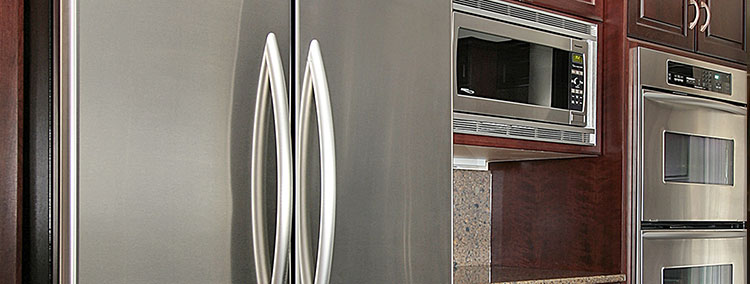
When you install a new refrigerator, the first thing you should do before you slide it into position is to ensure it’s leveled. If you are wondering why does a refrigerator need to be level, for one, you should know a leveled refrigerator looks great. A leveled unit also functions better.
Luckily, if your unit isn’t leveled, you can easily do it. Here is how to go about it as given by refrigerator repair experts:
Locate the legs
The most effective way of leveling the fridge is by adjusting the legs. The access points for the legs vary depending on the manufacturer, where some are easy to access without removing the panels, while others require you to remove the panels.
Find out the type of refrigerator you have and do the necessary. Once you reach the legs, inspect them for screws and bolts, and if present, you need to adjust them. You can rotate some of the legs freely while others will require you to use a wrench or screwdriver.
Rotate the legs
To rotate the legs, look along the top and bottom. You will see a slot near the top or a screw or bolt near the bottom. Using a flat head screwdriver or an adjustable wrench or pliers, turn the leg clockwise to raise the fridge and counterclockwise to lower it.
For easy time, level the refrigerator from left to right. To ensure the fridge is level, place the level on top of the fridge behind the door and adjust the legs accordingly.
Adjust the rollers
If you adjust the legs and still the refrigerator isn’t leveled, you should now adjust the rollers. Begin with removing the grille over the legs using your hands. If unsure how to go about it, consult the owner’s manual.
Each roller has a screw-on it that requires you to use pliers or a wrench to adjust it. You should turn the screw clockwise to raise the legs or counterclockwise to lower them.
After adjusting, measure the refrigerator tilt with a level. Place the level at the top of the fridge behind the door, and if the rollers are properly adjusted, the level will be flat from left to right.
As you are leveling the fridge, never tilt it back, prop or jack it unless the manufacturer advises you to do it. This is because even small appliances are heavy enough to cause serious injuries when they tip over or fall. Also, don’t attempt to lay the fridge on its back or side.
Other ways to keep your refrigerator functioning optimally
Other than keeping the refrigerator leveled, there are plenty of other things you can do to keep your fridge functioning optimally. Some of these things include:
Keep the appliance clean: Most homeowners only clean the outside of the refrigerator, which often isn’t enough to keep the fridge working properly. At least once a week, remove all the food in the refrigerator and clean the insides.
While at it, inspect the seals and ensure they are in good shape. Remember, if they are faulty, cold air will escape making it harder for the unit to keep its cool. So replace them if necessary.
If the seals aren’t damaged, clean them with warm soapy water that will stop debris and food spills from blocking them.
Give the fridge enough space: There is no way a stressed refrigerator will function optimally, so ensure your appliance has enough breathing space. The unit should have enough space on the top, back, and sides. This way, the unit will have enough space to expel heat.
Don’t overload the appliance: It’s common for homeowners to pack the fridge with as many products as it can take. This often happens after they have visited the grocery store. You should note that when you store too many items in the refrigerator, you prevent air from circulating as well as it should, and the air conditioner works harder than it should preserve the food.
Overloading the appliance also leads to excessive wear and tear as given by appliance repair Northern VA experts. To keep your appliance in top shape and prevent it from getting damaged, only stock what the unit can take.
The post appeared first on Express Appliance Repair